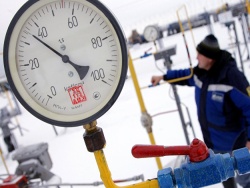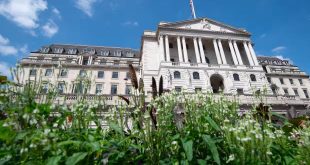
Investments in gold have become the main trend of the beginning of the year. The price of the precious metal only for February increased 10%, since the beginning of the year growth was 16%. On the background of the global economic and political instability, investors are less invested in the currency due to the volatility of the prices, but also sharply reduced investment in falling oil prices. Interestingly, the Central Banks of countries such as Russia and China, rapidly increasing physical reserves of the precious metal in recent years, although most Western experts believed this policy to be outdated.
At the beginning of this year gold has been the most attractive asset in the world markets. According to Bloomberg, the SPDR Gold Shares (the world’s largest private gold reserves, leading trade on the stock exchange) managed to attract over two months of $4.5 billion, which was the highest result among other funds, the American stock exchange. Since the end of January the price of gold rose 10%, reaching $1,233 thousand per ounce, and this is the fastest monthly gain since 1979, when Islamic revolution in Iran has provoked jump of world tensions. For comparison, analysts lead the fastest growing world currency — Japanese yen, over the same period rose against the dollar only by 6.5%. However, in December last year the price of gold was at the minimum level for the last 5 years.
Senior analyst IK “Aton” Andrey Lobazov explains the increased interest in gold global economic challenges and the increasing volatility in world markets, primarily the USA and China (recall that the collapse on the Chinese stock exchange since the beginning of the year amounted to about 25%).
In these conditions, investors are looking for an island of reliability, but the gold is deemed reliable “defensive” asset, — the expert explained “Izvestia”. However Lobazov not sure that gold will go up at the same pace.
— Further growth is not obvious, — the analyst believes.
Western analysts, however, believe in the prospects of the precious metal. Bloomberg cites the opinion of Barnabas Ghana from Oversea-Chinese Banking Corp., who believes that by year-end, the value of an ounce of gold could rise to $1.4 thousand in case of concerns about the risks of the global economy strengthens. This scenario shows last weekend in Shanghai meeting of Finance Ministers “big twenty”, is the most likely. It is expected the next change in the forecast of global GDP growth for 2016 in the direction of reducing it.
Chief economist of Alfa Bank Natalia Orlova in an interview with “Izvestia” expressed the view that the growth of interest in gold was partly due to the deflationary decline in oil prices.
Is battling deflationary trend, — says the expert. True, gold will not be able to serve as a substitute for oil in full.
In other words, relying on higher returns, investors pull their money out of oil assets and invest them in precious metal. This process was associated with the real demand for physical metal in the industry, which in recent years has remained nearly unchanged and was at the level of 2.5 thousand tons per year.
Interestingly, in recent years the world market have coexisted two divergent trends — if the Central banks of some countries were actively selling the gold, other securities, in contrast, bought up the precious metal. Last week the international monetary Fund has published statistics according to which in 2015 the biggest seller of gold turned out to be Turkey — the Turkish Central Bank sold 437 thousand ounces. Also big sellers were DC (220 thousand ounces), El Salvador (174 Koz) and Germany (103 thousand oz). But the biggest buyers were China and Russia.

China was purposefully increased its purchases of gold for the past 6 years, increasing gold reserves by 59% to 1,658 tonnes However, according to the financial website ZeroHedge, the real gold reserves in China can be 3-4 times more than official data. Active purchases of gold are associated with the fact that China aims to make yuan an international reserve currency (he recently was finally included in the “basket of currencies”, IMF). According to some reports, in 2009 China set a goal by 2020 to increase the reserves of physical gold to 10 thousand tons, having caught up on this indicator of the USA. The Bank of Russia last year has purchased 6.7 million ounces of gold (almost 22% more than in 2014). Total gold reserves of the Russian Federation is estimated at more than 1.3 thousand tons, and over the last decade, it has doubled.
If the West is skeptical of a strategy to increase stocks of physical gold, calling it a relic, now, when the economic situation in the world increasingly resembles a “perfect storm”, some other assessment. So, the German newspaper Die Welt last week wrote that Russia, in January developing gold reserves by 20 tonnes, seeks to undermine the economy of the United States and Europe, as a large-scale gold purchases to reduce the role of the Western currencies. Die Welt notes that economic reasons to increase gold reserves in Russia. But gold is able to protect its owner from fluctuations in exchange rates. Natalia Orlova agrees with the second part of this statement. When Central banks start to increase purchases of gold, she says, think they are not primarily about getting something to undermine, but about their own interests.
— Now the volatility in the foreign exchange market has become so active, and the dynamics of currency prices are so much less predictable that the Central Bank prefer to invest in gold, says the economist.








